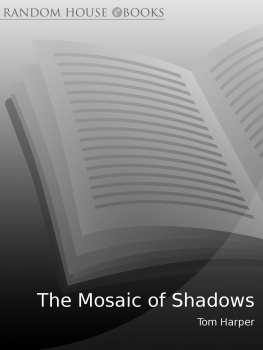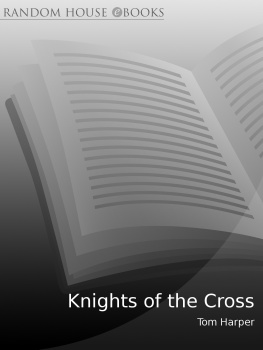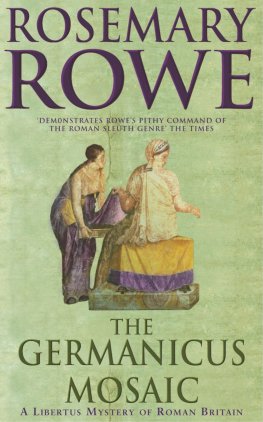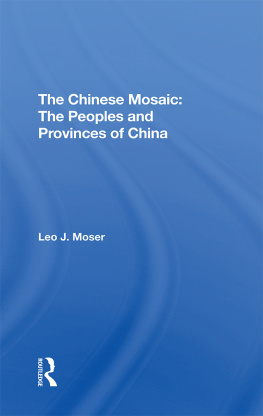Table of Contents
This eBook is copyright material and must not be copied, reproduced, transferred, distributed, leased, licensed or publicly performed or used in any way except as specifically permitted in writing by the publishers, as allowed under the terms and conditions under which it was purchased or as strictly permitted by applicable copyright law. Any unauthorised distribution or use of this text may be a direct infringement of the authors and publishers rights and those responsible may be liable in law accordingly.
Epub ISBN: 9781409065913
Version 1.0
www.randomhouse.co.uk
Published by Arrow Books in 2004
3 5 7 9 10 8 6 4 2
Copyright Tom Harper 2003
Tom Harper has asserted his right under the Copyright, Designs and Patents Act 1988 to be identified as the author of this work
This book is sold subject to the condition that it shall not, by way of trade or otherwise, be lent, resold, hired out, or otherwise circulated without the publishers prior consent in any form of binding or cover other than that in which it is published and without a similar condition including this condition being imposed on the subsequent purchaser
First published in the United Kingdom in 2003 by Century
Arrow Books
The Random House Group Limited,
20 Vauxhall Bridge Road, London SW1V 2SA
www.rbooks.co.uk
Addresses for companies within The Random House Group Limited can be found at: www.randomhouse.co.uk/offices.htm
The Random House Group Limited Reg. No. 954009
A CIP catalogue record for this book is available from the British Library
ISBN 9780099453482
The Random House Group Limited makes every effort to ensure that the papers used in its books are made from trees that have been legally sourced from well-managed and credibly certified forests. Our paper procurement policy can be found at: www.randomhouse.co.uk/paper.htm
Typeset in Minion by Palimpsest Book Production Limited, Polmont, Stirlingshire
Printed in the UK by CPI Bookmarque, Croydon, CR0 4TD
About the Author
Tom Harper is the author of The Mosaic of Shadows, Knights of the Cross and Siege of Heaven. He studied medieval history at Oxford University and now lives in York.
Visit Tom Harper at www.tom-harper.co.uk
for Marianna
muse
Acknowledgements
Two noble historians, a princess and a knight, were indispensable companions in this project. Anna Comnenas Alexiad and Sir Steven Runcimans History of the Crusades (both published by Penguin) provided the historical core of the story, and there were few days when I did not refer to one or both of them. Both works were as enjoyable as they were rigorous, and in the general chronology of events, particularly the battles in Holy Week, I have followed their leads as closely as possible.
As with Alexios Komnenos and his empire, a wise marriage and supportive family were invaluable in realising my ambitions. My Greek parents-in-law offered hospitality and valuable feedback on the draft manuscript, while my mother was always on call for scriptural or religious references. My sister Iona accompanied me on my inter-continental research trip, and was frequently summoned out of libraries to provide a classical anecdote or Greek translation. As for my wife Marianna, from the moment she provided the original idea she has had an immeasurable influence as fan, critic, proof-reader and muse.
Out of the family fold, Jane Conway-Gordon encouraged this at an early stage, and proved that the Byzantines have nothing to teach her about the shadowy arts of agenting. Oliver Johnson at Century was a generous and convivial editor, as well as doing duty as a relocation consultant. The vast resources of the Bodleian library in Oxford unfailingly turned up the most obscure works which my meandering researches demanded; I could not have written the book without them. Many friends in Oxford and London provided much-needed relief from the work, and in the process probably learned far more about eunuchs than they ever wanted.


For a thousand years after the fall of the West, the empire of Byzantium, centred on the great city of Constantinople, perpetuated the living, unbroken legacy of the Roman empire. It reached the peak of its latter-day power in 1025 under the Emperor Basil II, but a dozen weak and corrupt successors squandered his accomplishments until the very existence of the empire was under threat. In these circumstances, a dynamic, young leader named Alexios Komnenos rose to the imperial throne from a cabal of the powerful military families, and through hard-fought campaigns and cunning diplomacy managed to reassert the strength and glory of Byzantium. But he was not unopposed: Turks, Normans, Bulgarians, Germans and Venetians constantly pressed at his borders, while contenders from within his own and rival families schemed recklessly to usurp his throne. With the Turks in particular advancing ever further into the hinterland of Asia Minor, Alexios was forced to beg the estranged Pope in Rome to provide soldiers to buttress the faltering Byzantine armies. Much to his surprise, and subsequent alarm, he got them: the Pope preached the first crusade, and tens of thousands of western knights mobilised to descend on Byzantium.
The language of Byzantium was Greek, but through all its history its citizens referred to themselves as Romans. Any peoples beyond the empires borders were considered barbarians.
Why have our two consuls and praetors come out today wearing their embroidered, their scarlet togas?
Why have they put on bracelets with so many amethysts, and rings sparkling with magnificent emeralds?
Why are they carrying elegant canes beautifully worked in silver and gold?
Because the barbarians are coming today and things like that dazzle the barbarians.
C P Cavafy
tr. Keeley and Sherrard
THE MOSAICOFSHADOWSTom Harper
It was evening when the axe-wielding barbarians arrived at my door. The sun was sinking behind the western ramparts, casting the sky and all below it in copper. In the windless air the canopies and awnings of the queen of cities were still as the myriad towers and domes above them, yet by only inclining an ear you would have met the gentle, sustained notes of the chants which swelled out from the hundred surrounding churches. All day the tide of humanity had run high in the streets, the denizens of Byzantium gathering to mark the feast of Saint Nikolas and to watch the Emperor process through their midst; now that tide was slowly ebbing, slipping back into the arcades and tenements from whence it had come. I sat on my roof and watched them go, sipping a welcome cup of wine after the week of fasting.
Zoe, the younger of my daughters, announced the barbarians. From the corner of my eye I saw her face emerge from the opening at the top of the ladder, concern and puzzlement creasing the smooth skin below her piled ringlets.
There are men to see you, she said breathlessly, still standing on the ladder. She paused, reconsidered. Giants. Titans. Three of them, with enormous axes and one like Prometheus, with a beard of fire.
My daughter has always been given to poetry, though I notice it more often now.

















